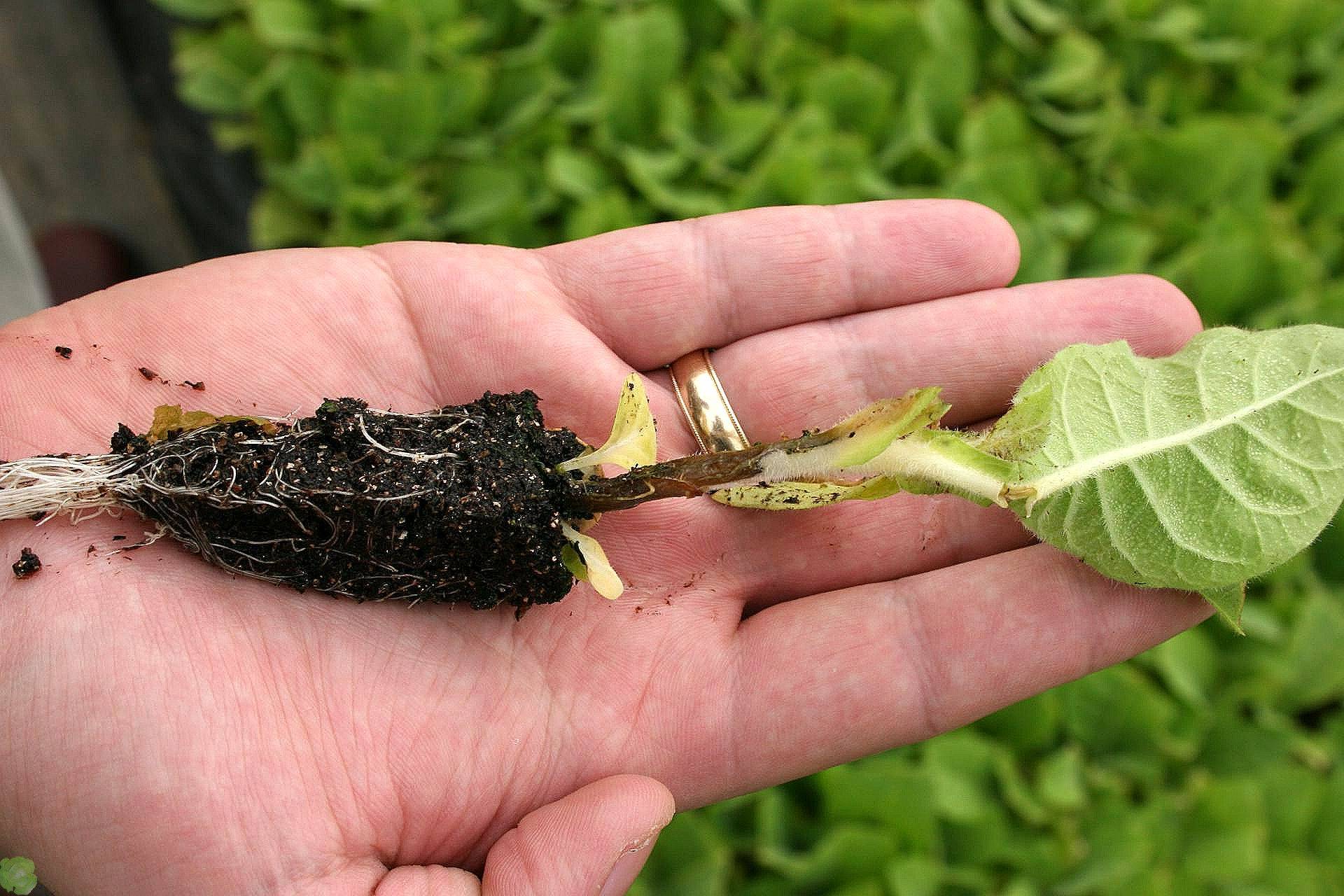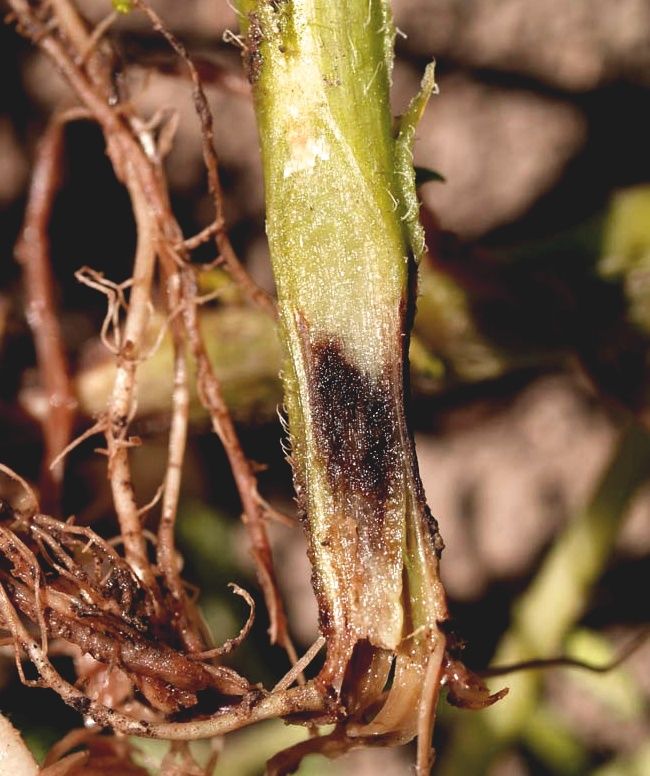WHAT IS SCAB AND WHY IT IS DANGEROUS FOR PLANTING?
Fruit trees that we plant for the yield, don't yield at all sometimes.
And there can be many reasons here: from the wrong choice of varieties for a certain area to the death of the crop due to diverse parasites and pests. And to protect your garden from them, you need to study how this or that pest can be seen, how dangerous it is, and what needs to be done to eliminate these pests.
One of these signs that scab is on an apple tree or on a pear, which is a quite common disease that don't only significantly impair the fruit appearance, but also negatively affects their taste.
It will not be able to cause significant harm to the tree, but the quality of the crop is likely to decrease several times. Where does the scab come from, who "stands" behind these manifestations, but most importantly, how to protect trees from scab?
What causes scab on fruit trees?
Scab on trees and shrubs - these are gray-brown spots on leaves, shoots, trunks and, most importantly, on the fruits. Different plants are affected by microorganisms: bacteria or fungi in different ways.
Scab on an apple tree is caused by the marsupial fungus Venturia inaequalis, and on a pear by a fungus Venturia pirina, and various types of trees do not become infected from each other. Fungus in the cold season lives in the bark of trees and in the humus from fallen leaves, and after the onset of spring, it begins to actively spray spores that are carried by wind, rain and insects.
When spores get on foliage, shoots and buds, fungi begin to grow and parasitize. Moreover, it is important for them that there is a high humidity. In a dry sunny summer scab desease probability is much lower than in rainy and cold weather. The spots have a gray-brown color and are dangerous because the affected area does not grow, covered with cracks and can simultaneously become infected with something else.
Where does the scab come from on the site?
The fungus that causes scab on leaves and fruits can get on area in different ways. Most frequent ones are the following:
- Spores transmitted by the wind from a neighboring area. And the distance can be up to several kilometers.
- Birds, insects, or even humans brought the fungus itself or its spores from outside.
- Earth or humus. The fungus can be easily brought with seedlings, delivered in the form humus or with fertilizers.
The parasite perfectly waits out the cold season in foliage, bark or dry branches.Therefore, it is practically impossible to completely exclude its ingress from the outside and trace his path too. But you can learn why he stayed and activated in the area.
- Irregular or excessive watering, rainy summer.
- Too closely planted trees, high density, poor ventilation.
·- Lots of dry shoots and areas of bark, leaves unharvested since autumn.
- The susceptibility of this variety to this pathogen.
If these factors are taken into account and corrected, then spores when hit simply cannot germinate and somehow harm the plants.
What does a plant affected by this pest look like?
The classic signs of scab occurance on fruit trees are the same spots on peel of apples or pears, on leaves or twigs, on bark or buds. The spots are at first gray-black, almost imperceptible, then grow, occupying the entire space. Sometimes they turn brown, sometimes dark green, which often complicates their discovery at an early stage. Large spots sometimes burst, and the fruits become deformed and grow disproportionately.
Why is scab dangerous for apple and pear trees?
The fungus is unlikely to be able to cause significant harm to the tree itself, but it can “bring” other deseases that will no longer be as harmless.
Scab can reduce the yield by 40% if not taken care of and reduce it the quality is almost 100%, as the fruits lose their attractiveness, which is very important in commercial gardens. A fungus cannot bring any harm to a person, such apples and pears can be eaten.
How to get rid of a pest?
If spots appear on a couple of fruits, then it makes no sense to actively try get rid of it, it’s just worth following agrotechnical measures and this will be enough. But if there are already a lot of damaged fruits, or the scab has spread to the bark and shoots, then It is worth thinking about the of the tree treatment.
How to prevent scab?
To prevent the appearance and spread of scab on fruit trees, it is necessary to regularly inspect and follow a number of rules that are familiar to any gardener.
- The most important thing is not to overcrowd plants so that there is no unnecessary thickening and moisture. On average, it should be at least 3-10 meters, depending on the crown of trees.
- Annual processing of trees. Dry branches and foliage should be removed regularly, otherwise, not only the fungus, but also a number of other parasites begin to start a new infection in them.
- Moderate watering. High humidity, especially in hot summer weather is an excellent environment for the active growth of a large number of microorganisms.
- Planting only disease-resistant tree varieties. Sometimes even this is enough to protect trees from scab.
Chemicals effective against fungi.
If all the actions taken do not help, then you can start spraying and using a few dozens of effective fungicide chemicals. Before blossoming, trees are treated preventively with bordeaux liquid or some drugs of your choice: Abiga-Peak, Horus, Skor and others, diluted in 10 liters of water. When symptoms of scab appear, you can use urea, in the bud phase - treatment with a fungicide solution, after the end of flowering - HOM or again bordeaux mixture.
Whatever chemicals you choose, they should not be used before harvesting, and be sure to follow the instructions completely so as not to harm yourself or the garden.
Подпишитесь на обновления и узнавайте первыми о выходе новых статей




